
11-21 #SoWhat : MediaTek has announced a new partnership with Meta; Samsung claims no plan to produce mid-range foldable; Samsung has reportedly excluded BOE from its supply chain; etc.

Apple has fallen further behind in its multibillion-dollar effort to make a modem chip for the iPhone, stymied by the complexity of replacing an intricate Qualcomm component. After already delaying a plan to have an in-house chip ready by 2024, Apple is now likely to miss a goal to ship the component by the spring of 2025. That would postpone the release until at least the end of 2025 or early 2026 — the final year of Apple’s recently extended contract with Qualcomm. (Android Authority, Bloomberg, Apple Insider)
MediaTek executive Vince Hu has officially announced a new partnership with Meta that would allow the brand responsible for the Ray-Ban Meta smart glasses to develop something more capable of augmented reality or mixed reality experiences. The next generation of Meta smart glasses are likely to have a built-in “viewfinder” display to merge the virtual and physical worlds, allowing users to scan QR codes, read messages, and more. Beyond that, the company wants to bring AR glasses into the fold, which presents a much broader set of challenges.(Android Headlines, 9to5Google, IT Home, Sohu, Yahoo)
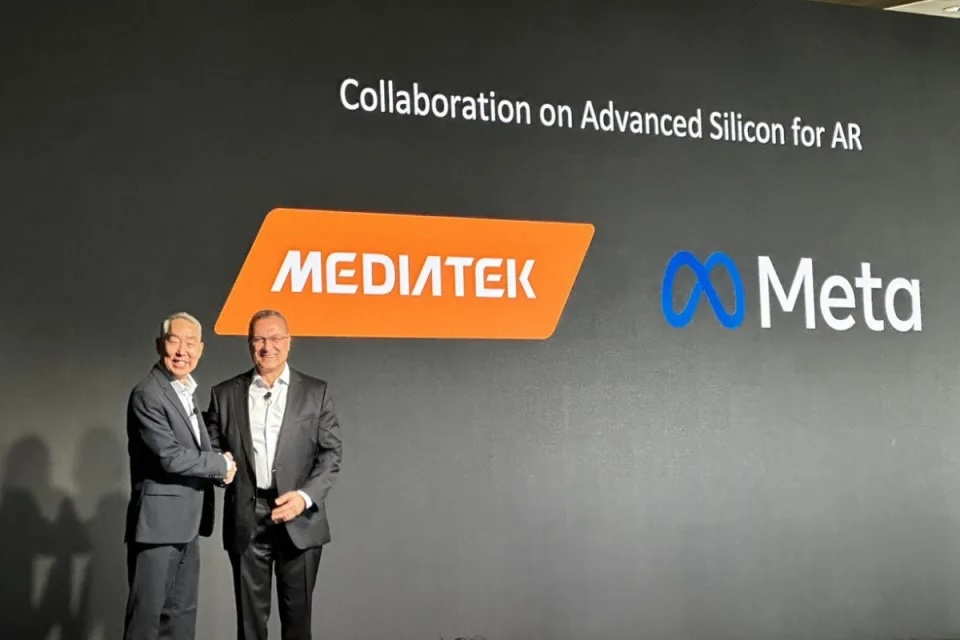
Japanese chipmaker Rapidus has formed a partership with Canada’s AI specialist Tenstorrent to mass produce semiconductors for artificial intelligence applications. The two companies will to jointly develop semiconductor IP (design assets) in the field of AI edge devices based on 2nm logic semiconductors. They say the resultant chips will consume less electricity than today’s equivalent products. Rapidus is also planning to acquire EUV lithography technology, which is essential for the production of cutting-edge semiconductors, from imec. Rapidus plans to start operation of a pilot production line at IIM-1in April 2025, and begin mass production in 2027. CN Beta, Tenstorrent, Japan Times, Evertiq)
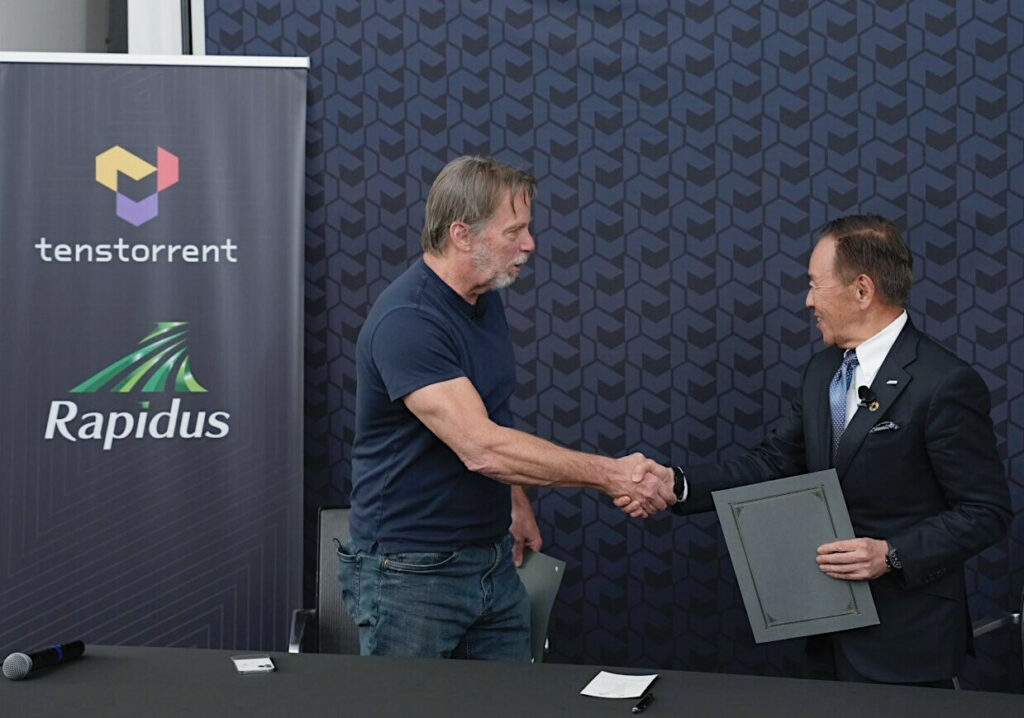
The Alt operating system developed by Moscow, Russia-based Basalt SPO has been recompiled to support Chinese Loongson processors based on the LoongArch architecture. Blacklisted Loongson has actively supported the porting process. The OS is available as a distro with a basic set of programs (Firefox, GIMP, LibreOffice) that can be installed on desktops, workstations, and servers. The company says the product is offered ‘as is,’ and its commercial distributives will be available later. Alt is now the first Russian operating system capable of running on Loongson’s processors based on the 64-bit LoongArch architecture, such as LS5000 and LS6000 series, which some in Russia consider alternatives to x86 CPUs from AMD and Intel. (CN Beta, Tom’s Hardware, Sina)
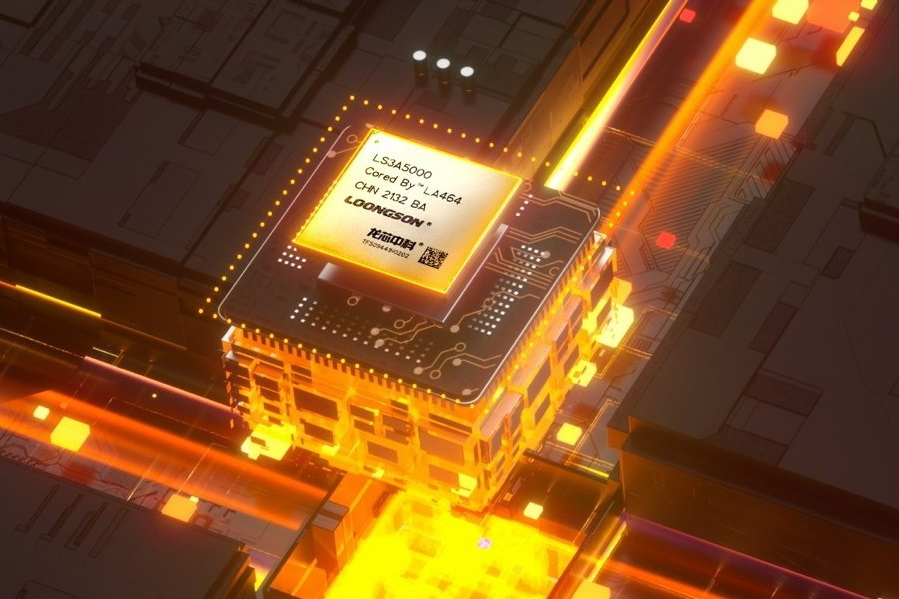
After NVIDIA increased its orders to TSMC in Oct 2023, Apple, AMD, Broadcom, Marvell and other companies also began to increase orders. In response to the needs of the above-mentioned five major customers, TSMC will accelerate the expansion of CoWoS advanced packaging production capacity. TSMC is expected to increase its monthly production capacity by about 20% in 2024 from its original target to 35,000 pieces. The increase in orders from TSMC’s five major customers shows that the rising demand for AI applications has led to an explosion in demand for chips such as graphics processors (GPUs) and AI accelerators. CoWoS can be divided into “CoW” and “WoS”. “CoW (Chip-on-Wafer)” is chip stacking; “WoS (Wafer-on-Substrate)” is stacking chips on a substrate. CoWoS stacks chips and then packages them on a substrate to ultimately form 2.5D and 3D shapes, which can reduce chip space, while also reducing power consumption and costs. (CN Beta, Linkedin, SemiMedia)
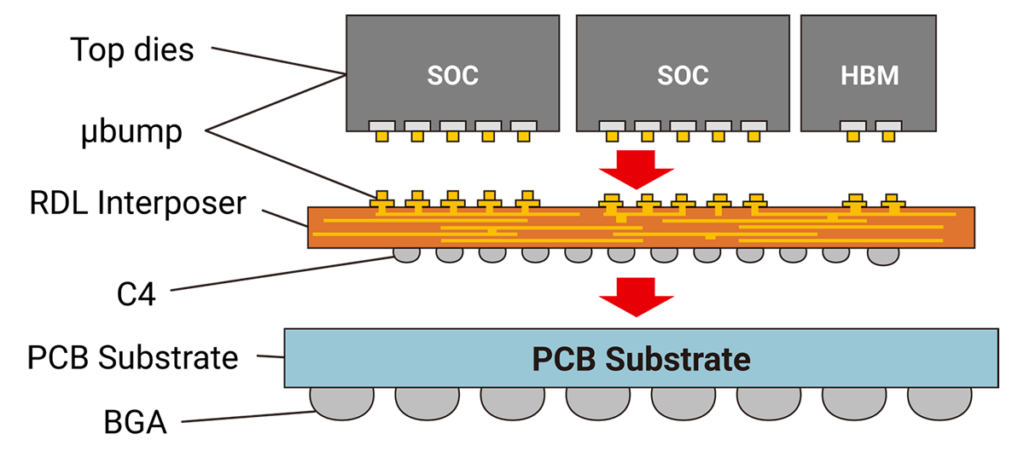
Nvidia has announced the Hopper H200 GPU, which is a platform for artificial intelligence and high-performance computing, designed to handle large and complex generative AI workloads, such as language models, recommender systems, and vector databases. The Hopper H200 GPU is the first product in the world to use the HBM3e memory technology. The Hopper H200 GPU is based on the Grace Hopper Superchip, which consists of a 72-core Grace CPU and a GH100 compute GPU. The Grace CPU has 480 GB of ECC LPDDR5X memory, and the GH100 GPU has 141 GB of HBM3e memory, which comes in six 24 GB stacks and uses a 6,144-bit memory interface. The Hopper H200 GPU can deliver up to 8 petaflops of AI performance and 10 TB/s of memory bandwidth. Nvidia’s Hopper H200 GPU is expected to be available in 2Q24. Nvidia claims that the Hopper H200 GPU can improve the performance of games and applications by up to 200 fps, depending on the scenario and the configuration.(CN Beta, Nvidia, Medium)
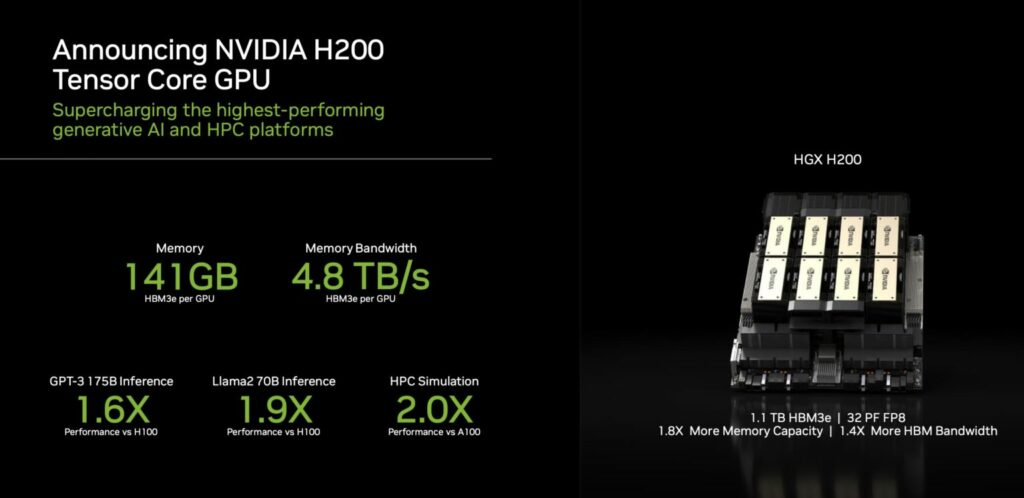
Qualcomm has unveiled Snapdragon 7 Gen 3 platform. The latest chipset from Qualcomm is manufactured on TSMC’s 4nm process technology and boasts a 1+3+4 CPU architecture. The primary core operates at up to 2.63 GHz, while three performance cores run at 2.4 GHz, and four efficiency cores operate at 1.8 GHz. Qualcomm claims that the chip offers a nearly 15% improvement in CPU performance and an over 50% jump in GPU performance compared to the previous generation Snapdragon 7 Gen 1. The chipset also offers 20% better power savings.(Gizmo China, Qualcomm)
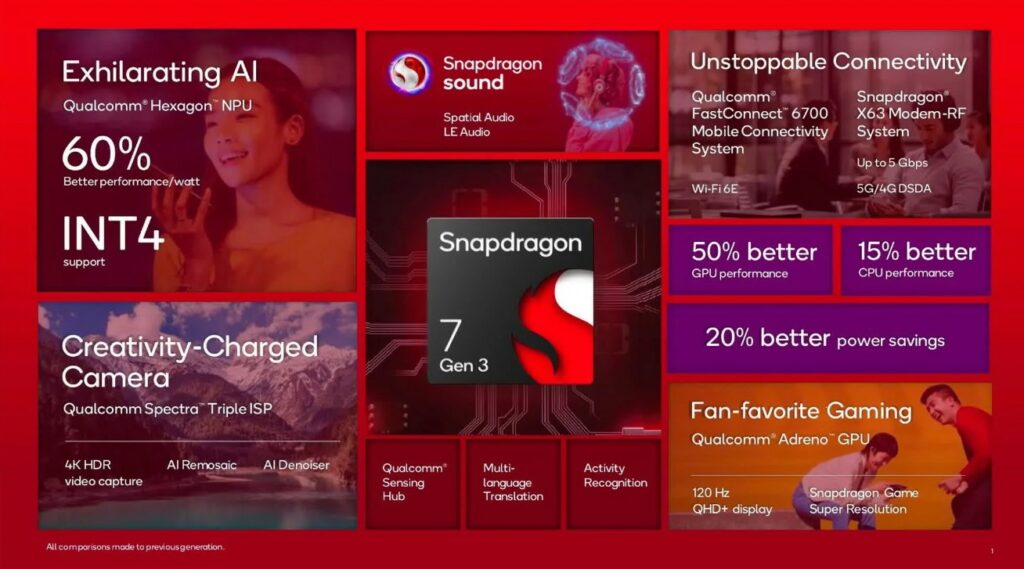
Intel has unveiled the latest performance and internal projections of its upcoming 5th Gen Emerald Rapids & next-gen Granite Rapids Xeon CPUs. The Intel 5th Gen Emerald Rapids CPUs will be pin-compatible with the Sapphire Rapids CPUs on the Eagle Stream platform. They utilize the same LGA-4677 socket and offer mainly an optimized design with few additional cores/threads, larger pools of cache, & focus on higher performance per watt. The company highlights that Emerald Rapids Xeon CPUs will offer workload-optimized performance and energy-efficient compute. At the same time, the addition of faster DDR5-5600 memory should result in higher bandwidth and transfer speedups. The 5th Gen Xeons will also offer CXL 1.0 and 2.0 support along with up to 80 PCIe Gen 5.0 lanes. Intel touts a 40% speedup in performance. Intel is also stating the internal performance projections of its upcoming Granite Rapids Xeon CPUs which will come in P-Core-only flavors while Sierra Forest will adopt the E-Core architecture & offer up to 288 cores.(CN Beta, Tom’s Hardware, Extreme Tech, WCCFTech, Intel)
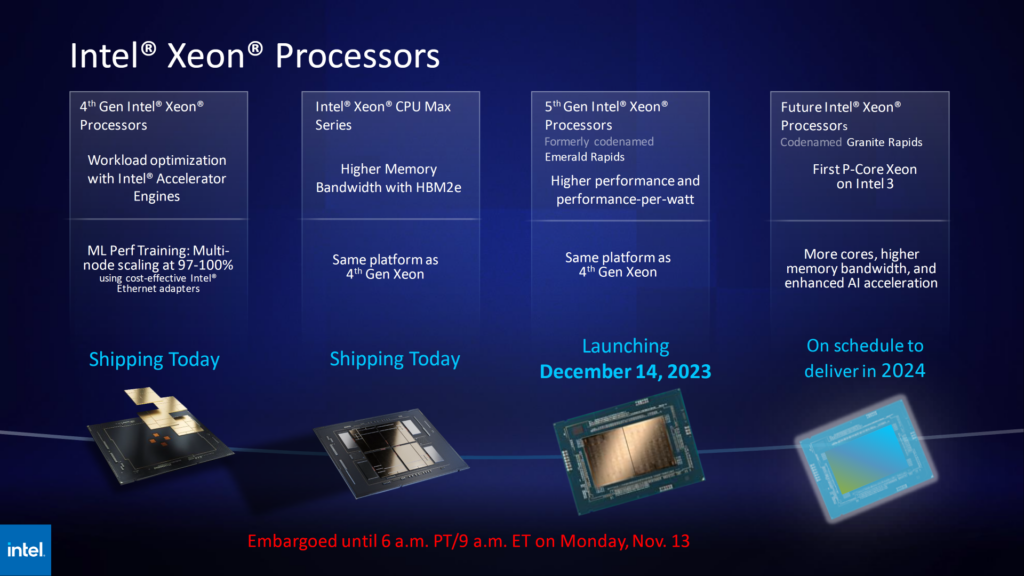
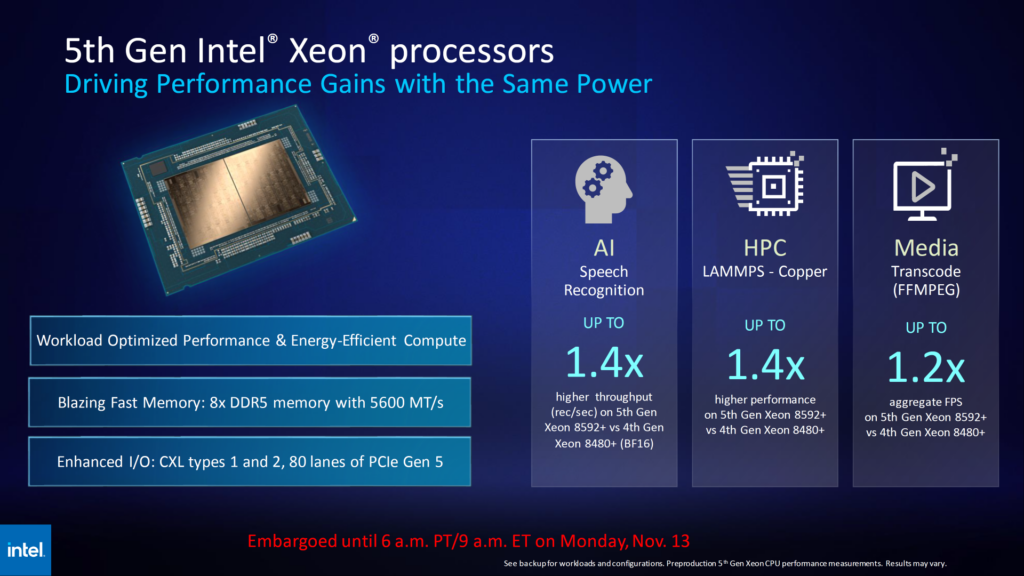

Samsung Electronics has said that it does not have plans to produce midrange foldable smartphones, denying recent rumors that its Z Flip and Z Fold slated for summer 2024 launch might be priced as low as USD400. (Android Authority, Korea JoongAng Daily)
Samsung Display is planning to add blue phosphorescent material to increase light production in 2H25. While current red and green phosphorescent materials used in OLED have an internal luminous efficiency of 100%, blue still sues fluorescent materials with an efficiency of 25%. Replacing the blue fluorescent materials with phosphorescent versions should increase the percentage and reduce overall power consumption. UBI Research deputy director Daejeong Yoon has said that Samsung Display is “actively developing” the blue phosphorescent materials. It will allegedly be added to a set given the name “B1”. Young added that the materials used in B1 will be materials Samsung Display is working on for the flexible OLED material set M15. (Apple Insider, The Elec)
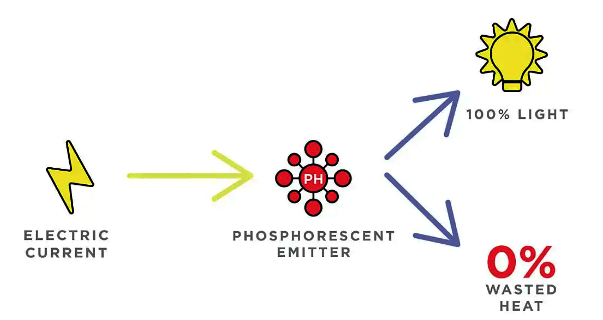
Samsung Electronics has reportedly excluded BOE from its supply chain. BOE, a display manufacturer based in China and LCD supplier to Samsung, supplied 10% of Samsung’s TV panels in 1Q23. However, in 3Q23, Samsung’s Device eXperience (DX) division excluded BOE from its supply chain for TV and monitor panels. Furthermore, it is believed that Samsung Electronics intends to sever ties with BOE mid-to-long term. Samsung Electronics’ decision to sever ties with BOE and exclude the Chinese company from its panel supply chain has to do with the ongoing legal disputes between Samsung Display and BOE. (CN Beta, Business Korea, SamMobile)

Bloomberg’s Mark Gurman has said that Apple is looking towards creating an “in-house strategy” for designing camera sensors. Photography is a major selling point for iPhones, reasons Gurman, thanks to initiatives such as Shot on iPhone. However, the design work may go beyond just iPhone. With cameras important to fields such as mixed reality and self-driving vehicles, creating its own cameras could be an opportunity to improve future models of the Apple Vision Pro and the often-rumored Apple Car. (CN Beta, Bloomberg, Apple Insider)
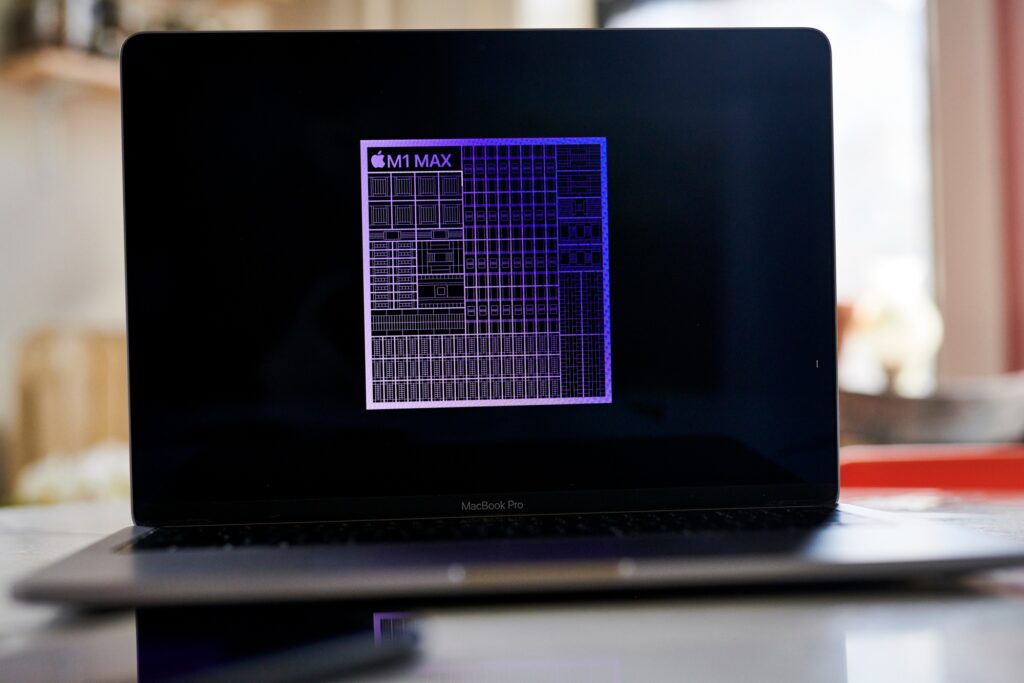

Samsung has announced its new portable SSD T5 EVO, which is the first portable drive with 8 TB capacity and comes with protection from external shocks. The T5 EVO is based on USB 3.2 Gen 1 and offers up to 460MB/s reading and writing speeds. The whole drive is 95mm wide, 40mm long and 17mm thick and weighs 102grams. Samsung’s portable SSD T5 EVO is available globally and costs USD190 for a 2TB option and USD350 for the 4TB version, while the world-first 8TB variant is USD650. (GSM Arena, Neowin, Samsung)
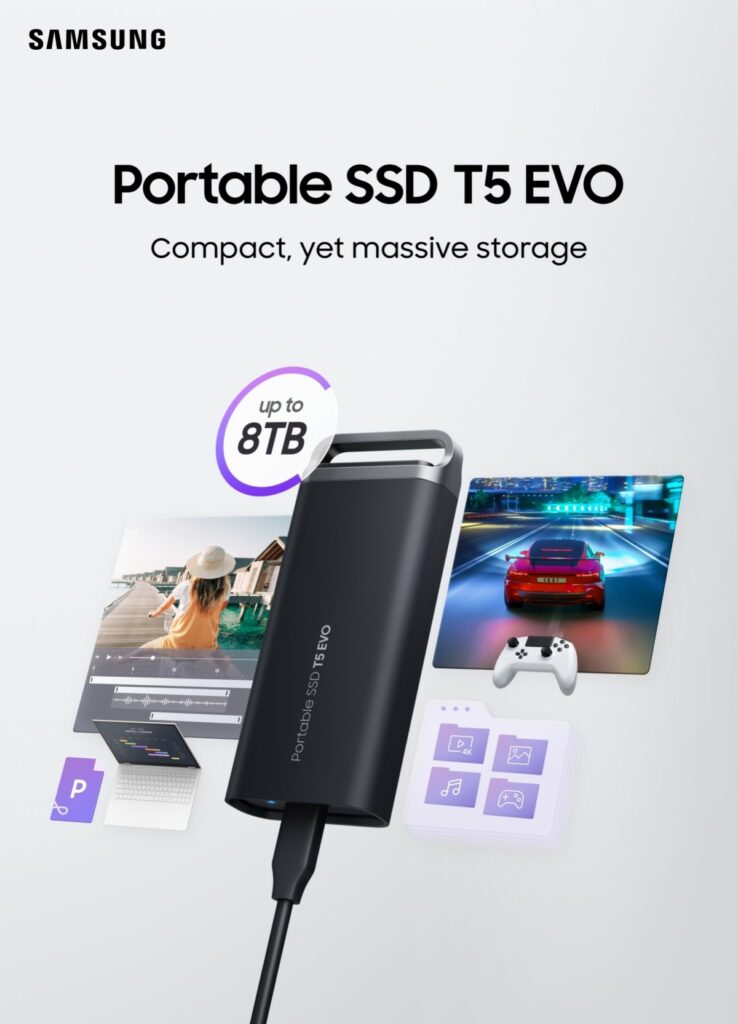

Creative has announced as the first manufacturer to include the solid-state micro-speaker technology in TWS earphones, and now the company is aiming for satisfying low end with the Cypress speaker. The Cypress solid-state MEMS speaker employs ultrasonic modulation to transform “ultrasonic air pulses into rich, detailed, bass-heavy, high-fidelity sound”. The xMEMS technology is aiming to offer “stronger, deeper bass that is consistent with the best 10-12mm legacy coil speakers, including sound pressure levels (SPL) greater than 140dB as low as 20Hz”. The modules each measure 6.3 x 6.5 x 1.65 mm and feature a modulator to generate an amplitude-modulated ultrasonic carrier wave that’s reported to be “an exact acoustic copy of the source signal” along with tech to demodulate the ultrasonic wave to transfer “acoustic energy down to the baseband, producing the intended audible sound as a result”.(Android Central, New Atlas)
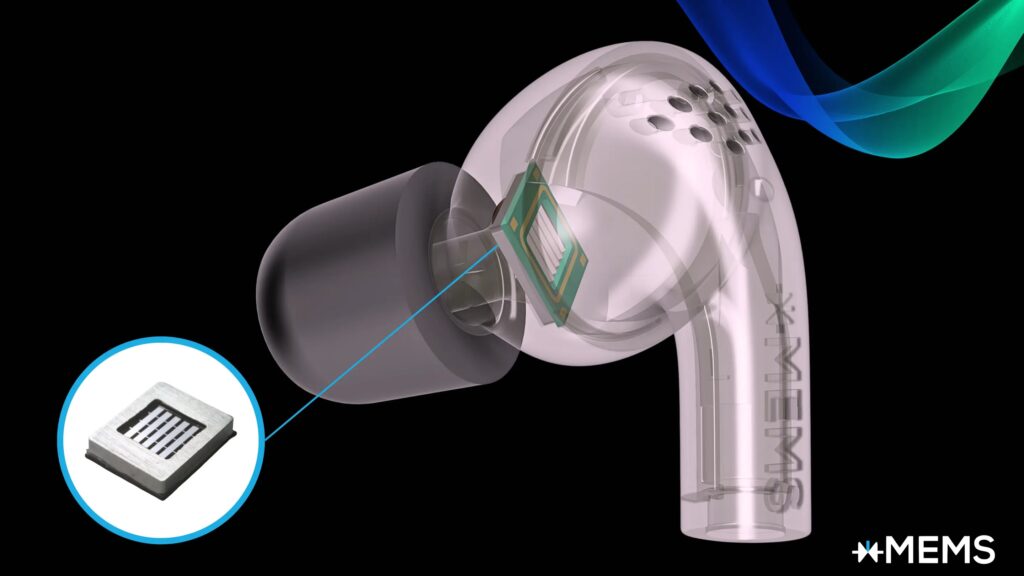

Toyota Motor North America (TMNA) and Redwood Materials announce an expanded recycling agreement that aims to create pathways for automotive batteries used in Toyota’s electrified vehicles that have reached the end of their life. The plan also includes an agreement for Toyota to source Cathode Active Material (CAM) and Anode copper foil from Redwood’s recycling activities for Toyota’s future, new automotive battery production. Redwood Materials, the battery recycling and components maker created by Tesla cofounder JB Straubel, said it will supply Toyota with anode and cathode materials to make new batteries at a massive U.S. plant the carmaker is building. Redwood said it plans to use at least 20% recycled nickel, 20% recycled lithium and 50% recycled cobalt in the cathodes it will make for Toyota. Its anode copper foil for the carmarker will be 100% recycled copper.(CN Beta, Teslarati, Digitimes, Forbes, Toyota)
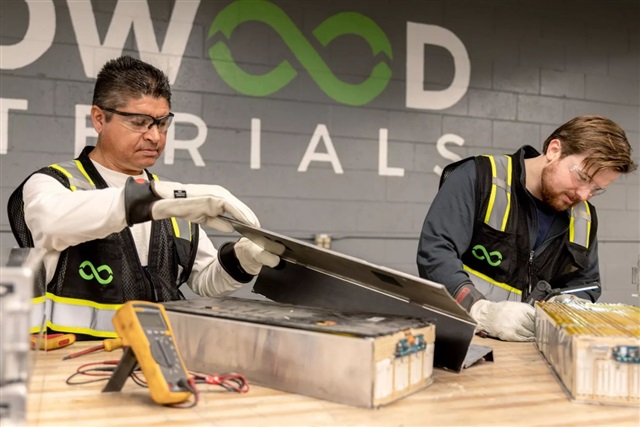

China Telecom has unveiled a new custom version of Huawei Mate 60 Pro with Quantum security. The new Huawei Mate 60 Pro with quantum security has integrated quantum information technology using the VoLTE network. It has built-in custom chipsets, a new secret algorithm, and a quantum security-powered SIM Card. These three combine a triple sided user protection. Quantum security is based on the use of quantum key distribution (QKD), which enables two parties to share a secret key that can be used to encrypt and decrypt messages.(GSM Arena, My Drivers, Huawei Central)
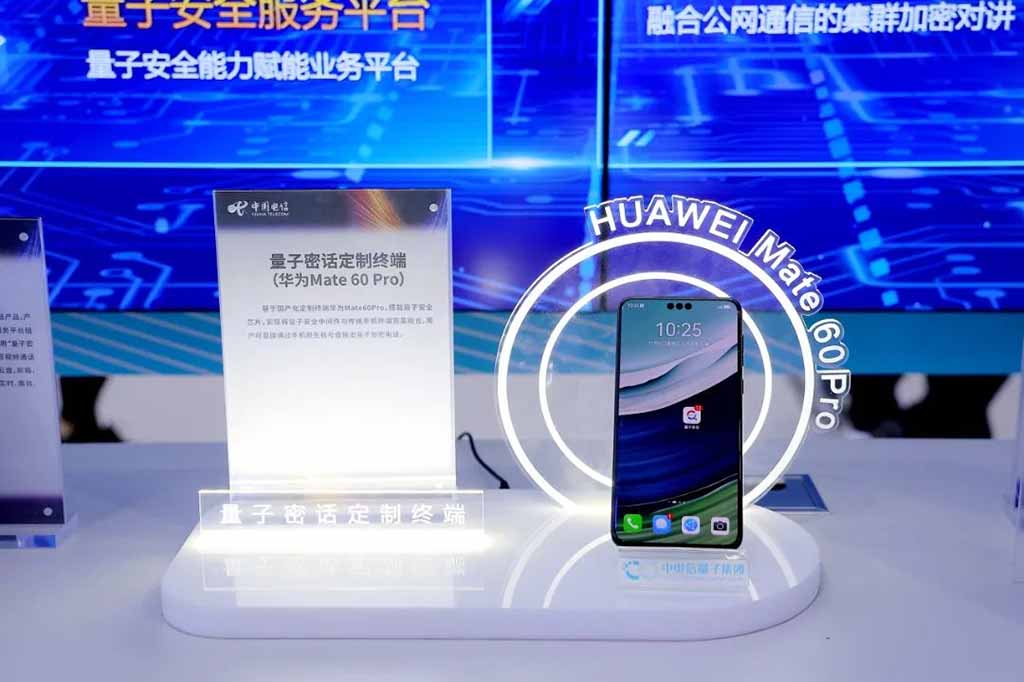

Apple has announced that it will adopt the RCS (Rich Communication Services) messaging standard. The feature will launch via a software update “later 2024” and bring a wide range of iMessage-style features to messaging between iPhone and Android users. Apple’s decision comes amid pressure from regulators and competitors like Google and Samsung. It also comes as RCS has continued to develop and become a more mature platform than it once was. RCS brings many iMessage-style features to cross-platform messaging between iPhone and Android devices. This includes things like read receipts, typing indicators, high-quality images and videos, and more.(Android Authority, Android Central, 9to5Mac, WCCFtech)
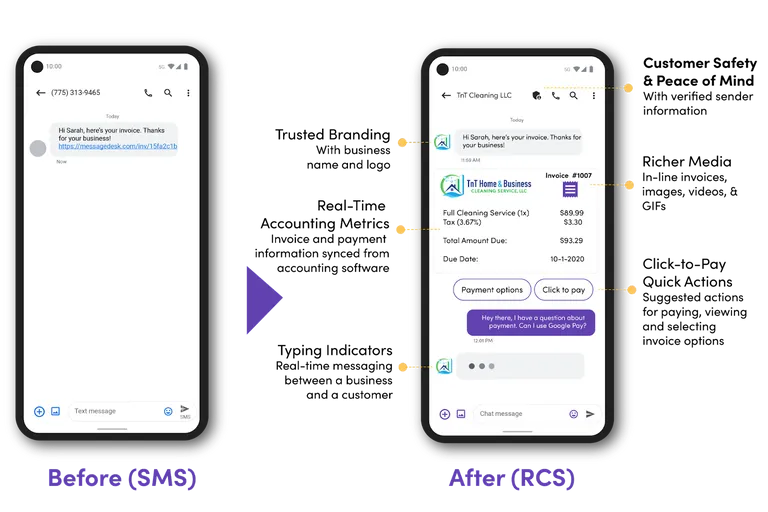
Huawei mobile business leader Richard Yu has officially announced that the next version of HarmonyOS, known as HarmonyOS NEXT, is ready to be launched. Native applications for HarmonyOS have been fully activated. The system foundation has been completely self-developed, eliminating traditional AOSP code and only supporting applications based on the HarmonyOS kernel and system. In addition, HarmonyOS NEXT can only use installation packages in Hap format, which means that HarmonyOS will no longer support Android applications. (GSM Arena, Pandaily, Android Headlines, 163.com)
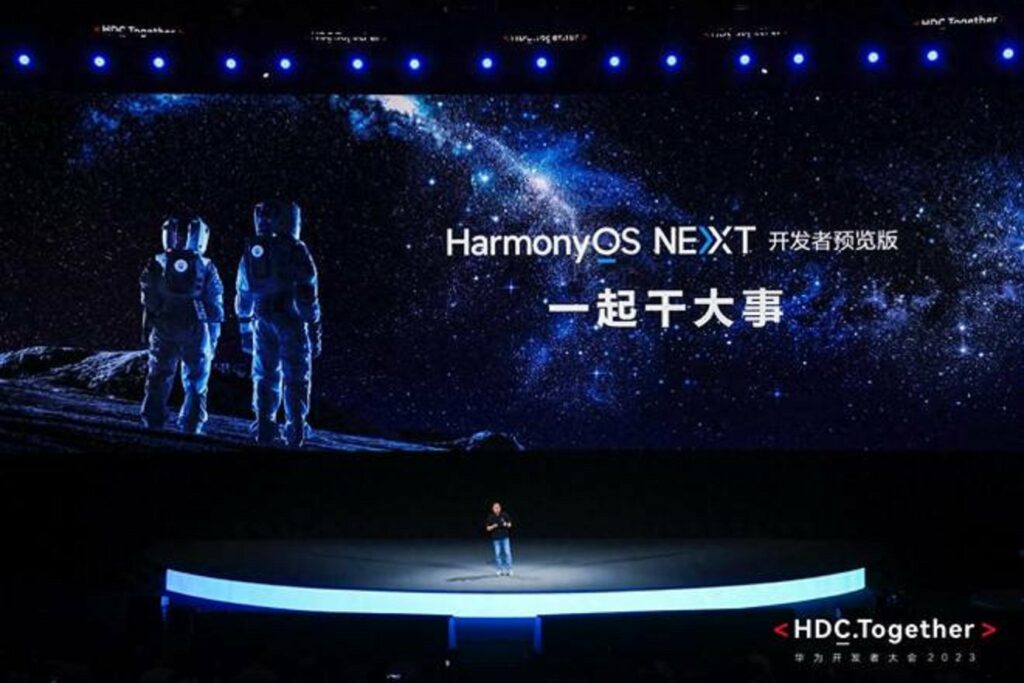
The New York Times says that Apple iPhone include code to identify when repair components are bought from Apple, and to intentionally fail if alternatives are used. Apple famously used to object to all “right to repair” moves to make it allow iPhone owners to go to independent repairers, to the extent that it allegedly got legislation watered down. It then launched its own repair service, and also backed California’s right to repair bill. However, the New York Times claims that for all its apparent change of heart regarding repairs, Apple has taken steps to made sure only its own parts can be used. As well as thereby profiting from selling parts, the publication says this drives people to AppleCare+, which now earns Apple an estimated USD9B annually. (Apple Insider, NY Times)

Google has agreed to pay USD8B over 4 years to Samsung Electronics to make its search engine, voice assistant and Play Store the default on the company’s mobile devices, according to testimony presented by Epic Games. This partnership between Google and Samsung forms part of a larger initiative by Google, known as Project Banyan, aimed at maintaining the dominance of its services on Android devices. Under this project, Google not only secured its apps’ pre-eminence on devices but also shared advertising revenue and offered incentives to OEMs for prioritizing Google’s apps. For instance, in 2020, Google proposed spending USD2.9B, which would increase to USD4.5B by 2023, to ensure the availability of its search, Play, and other critical apps on various devices, including those from non-Android OEMs and wireless carriers. (Gizmo China, Bloomberg)


Xiaomi has applied for a sales license for its first electric vehicle (EV) in China, and the regulatory filing with the Ministry of Industry and Information Technology in China has shown off the design and specifications of Xiaomi’s first cars. Xiaomi is working on the SU7 and the SU7 Max electric cars, and Beijing-based BAIC Group will manufacture both. The cars are similar but have key differences, such as different battery tech and a top speed of 210kmph vs 265kmph. The SU7 has a curb weight of 1,980kg, while the SU7 Max weighs 2,205kg. (Android Authority, Weibo, Leiphone, IT Home)
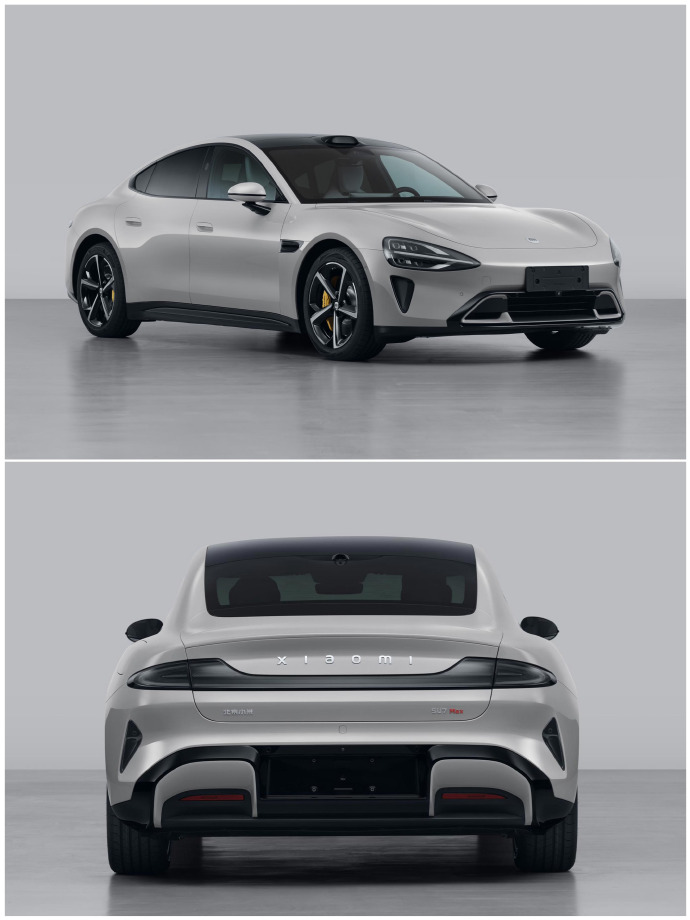
Volvo CEO Jim Rowan says Apple CarPlay is a value to customers, and its vehicles should focus on making the overall driving experience better, not on revenue generated from infotainment clusters. There is a trend among some vehicle manufacturers that is taking choice away from customers. Companies like GM and Tesla want users to have integrated experiences with the infotainment system, treating the vehicles almost like smartphones. He has detailed how Volvo sees itself adapting different services to enhance the driving experience rather than ripping customer choice away. (Apple Insider, The Verge)
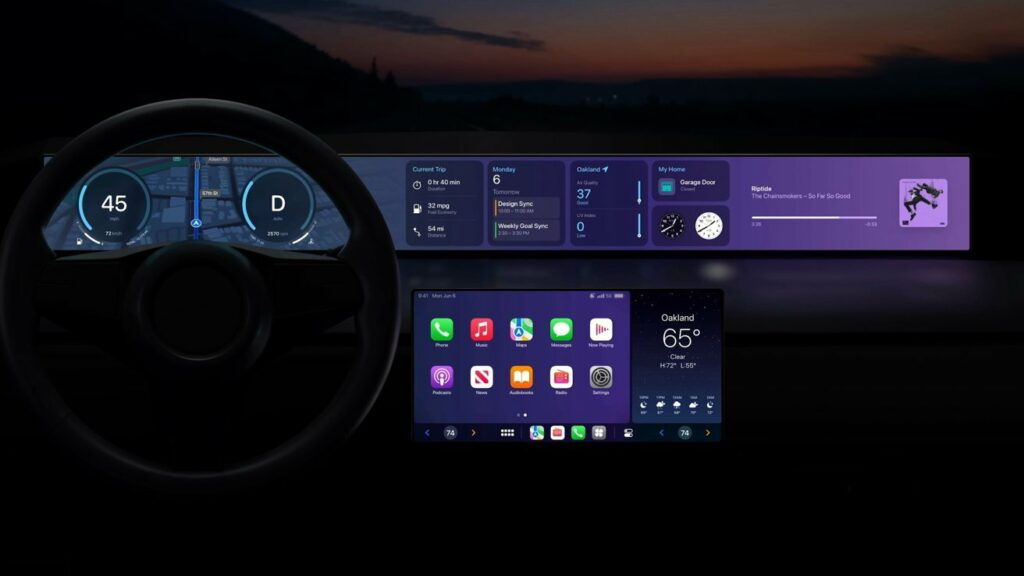

Meta has reportedly broken up its Responsible AI (RAI) team as it puts more of its resources into generative artificial intelligence. most RAI members will move to the company’s generative AI product team, while others will work on Meta’s AI infrastructure. The company regularly says it wants to develop AI responsibly and even has a page devoted to the promise, where the company lists its “pillars of responsible AI,” including accountability, transparency, safety, privacy, and more. Jon Carvill, who represents Meta, as saying that the company will “continue to prioritize and invest in safe and responsible AI development.” He added that although the company is splitting the team up, those members will “continue to support relevant cross-Meta efforts on responsible AI development and use”.(CN Beta, The Verge, The Information, Interesting Engineering)

On 17 Nov 2023, OpenAI issued a statement stating that Sam Atlman would resign as CEO and leave the board of directors. Mira Murati, the company’s chief technology officer, will serve as interim CEO, effective immediately. The statement said that Sam Altman has been dishonest in his communications with the board of directors and has hindered the board’s ability to perform its duties. The board no longer has confidence in him continuing to lead OpenAI. At the same time, Greg Brockman, the other founder and president, will step down as chairman of the board and continue to serve in the company, reporting to the CEO. , several OpenAI executives and investors want to reinstate Sam Altman as CEO, but have reached an impasse over the composition and role of the board of directors. Altman rumored to be open to return, wants to replace existing board members. (CN Beta, CN Beta, CN Beta, Engadget, Bloomberg, NY Times, Axios, The Verge, WSJ)
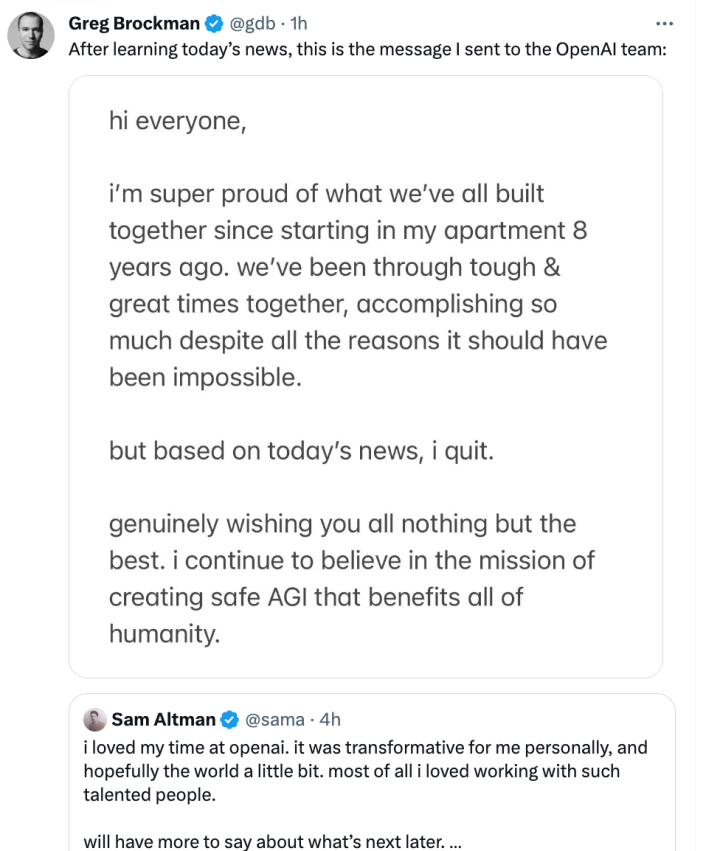
IBM has unveiled watsonx.governance, a new addition to its WatsonX AI solution suite, aimed at enhancing the management and monitoring of AI models, whether generated from IBM or other open-source communities. While generative AI, powered by Large Language Models (LLM) or Foundation Models, offers many use cases for businesses, it also poses new risks and complexities, including training data scraped from corners of the internet that cannot be validated as fair and accurate, all the way to a lack of explainable outputs. Watsonx.governance provides organizations with the toolkit they need to manage risk, embrace transparency, and anticipate compliance with future AI-focused regulation. (CN Beta, IBM, IBM, Forbes, Yahoo)
